Summer in the City by Mikołaj Długosz
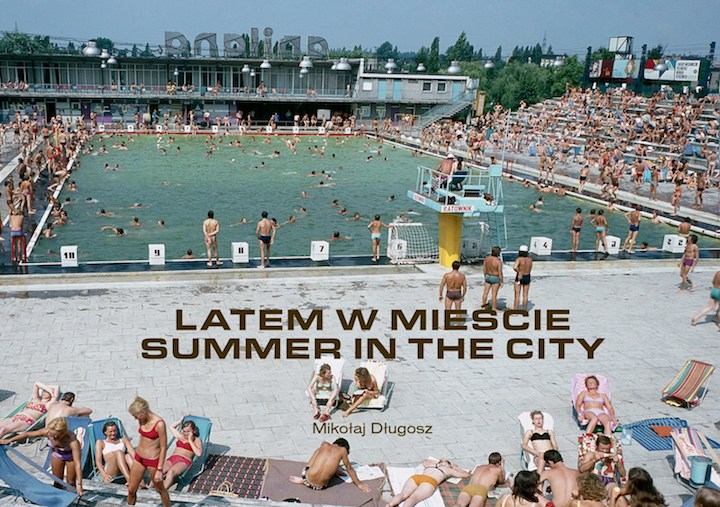 Summer in the City by Mikołaj Długosz, 2016
Summer in the City by Mikołaj Długosz, 2016Mikołaj Długosz occupied himself with archives of postcards from the times of the Polish People’s Republic when he created the now famous album entitled Such Nice Weather, Such a Pity We Must Go in 2006. Ten years later, he published a new book which is not only a sentimental collection of photographs but also an architectural guide to the tourist attractions of the time – every photo has maps and information about the location of the presented objects. The book’s text was written by Dorota Masłowska. On the website of the Bęc Zmiana Foundation we can read that:
In the 1970s, when the collection is from, the socialist authorities ran up huge debts to modernise the country. Many modern buildings with different functions were constructed at that time, often fitting into the urban space in unexpected ways. Portraits of them are the core of the album, while in the background appear scenes from everyday life, interesting details: typography, neons, models of cars rarely seen nowadays.
Modern Forms: A Subjective Atlas of 20th Century Architecture by Nicolas Grospierre
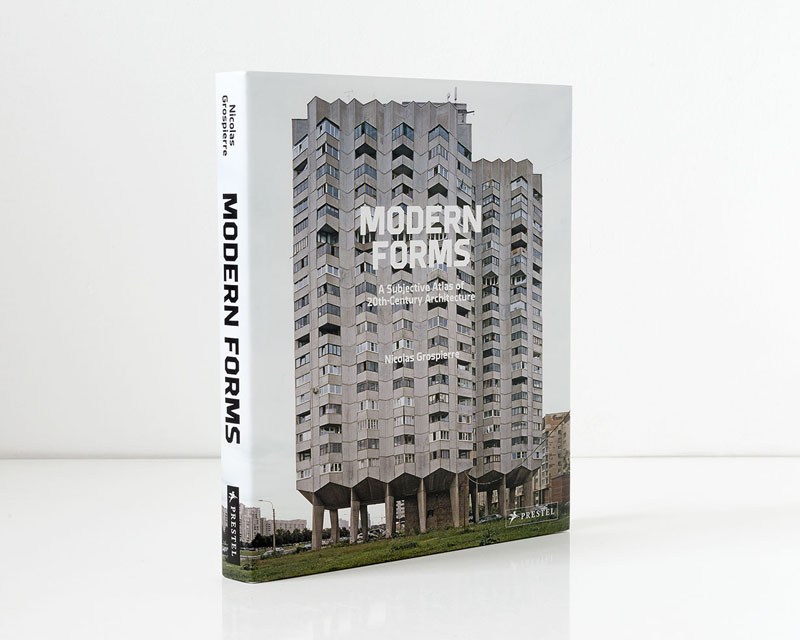 Nicolas Grospierre, Modern Forms, 2016, publisher: Prestel, photo: Nicolas Grospierre, courtesy of the author
Nicolas Grospierre, Modern Forms, 2016, publisher: Prestel, photo: Nicolas Grospierre, courtesy of the authorAfter 15 years of involvement in modernist architecture, Nicolas Grospierre published an album that sums up his work. Inside are 186 pictures of buildings constructed between 1920 and 1989 on four different continents. There are famous objects like Gateway Arch in Saint Louis or the Ukrainian Institute of Scientific Research and Development in Kiev as well as little-known structures. The pictures are complemented by information about each building and an index of their precise locations. It was edited by Alona Pardo and Elias Redstone, and the graphic design was done by Magda Ponagajbo. On Prestel Publishing’s website we can read that:
This book reveals how modernist architecture is the embodiment of political and social ideologies, especially in public institutions such as banks, churches, libraries, and government buildings.
How Polish do you feel today? Polish routes and detours in São Paulo edited by Renato Cymbalista, Roney Cytrynowicz, Mariana Lorenzi, Monica Musatti, and Benjamin Seroussi
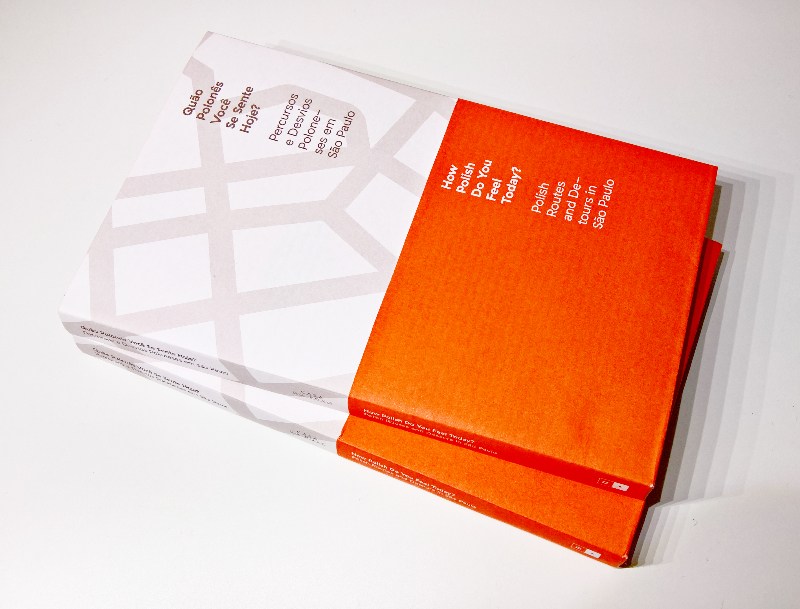 How Polish do you feel today? Polish routes and detours in São Paulo edited by Renato Cymbalista, Roney Cytrynowicz, Mariana Lorenzi, Monica Musatti, and Benjamin Seroussi, 2016, photo: courtesy of the ArtAnimacje Society and Casa do Povo
How Polish do you feel today? Polish routes and detours in São Paulo edited by Renato Cymbalista, Roney Cytrynowicz, Mariana Lorenzi, Monica Musatti, and Benjamin Seroussi, 2016, photo: courtesy of the ArtAnimacje Society and Casa do PovoThis exceptional guide to São Paulo came into being thanks to artist and architect Jakub Szczęsny as part of a presentation of Polish culture in Brazil. The book How Polish Do You Feel Today? Polish Routes and Detours in São Paulo shows the role of the Polish community and the descendants of Polish emigrants in shaping the city and how it is represented. The editors and publishers of the book are Benjamin Seroussi and Mariana Lorenzi from Casa do Povo, Roney Cytrynowicz and Monica Musatti from Editora Narrativa Um, and urbanist Renato Cymbalista.
Pilules polonaises 2 / Polskie pigułki 2 / Polish Pills 2 by Fanny Vaucher
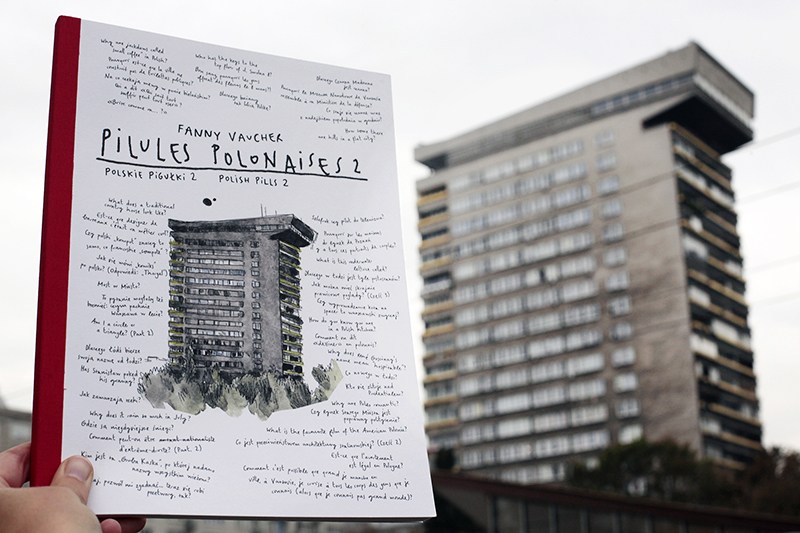 Cover of the book by Fanny Vaucher Polish Pills, graphic design: Cyber Kids on Real, publisher: Bęc Zmiana Foundation, 2016, photo: Justyna Chmielewska
Cover of the book by Fanny Vaucher Polish Pills, graphic design: Cyber Kids on Real, publisher: Bęc Zmiana Foundation, 2016, photo: Justyna ChmielewskaThis is the second part of the best-selling Polish Pills series – a drawn chronicle documenting and explaining life in Poland in three languages: French, English, and Polish. From Fanny Vaucher’s illustrated stories, we find out why Poles love compote, what the American Polonia’s favourite films are, and who has the keys to the renowned building at 8 Smolna Street in Warsaw. The book was published by the Bęc Zmiana Foundation and Noir sur Blanc. The graphic design of the Polish Pills 2 was created by Cyber Kids on Real studio and the font imitating Fanny’s hand-writing was designed by Zosia Frankowska. Piotr Kieżun wrote in his review for kulturaliberalna.pl:
Is there a remedy which, even if it is addictive, is beneficial for our health? Yes. It’s Polish Pills by Fanny Voucher. Taking it improves the mood, sharpens the sense of observation, allows us to look at ourselves with warm irony and most of all – opens our eyes to the virtues and weaknesses of Poles, their habits, obsessions, passions that they often don’t know about. Suggested dosage? Without limit.
Wojciech Zamecznik: Photo-graphics edited by Karolina Ziębińska-Lewadowska, Karolina Puchała-Rojek
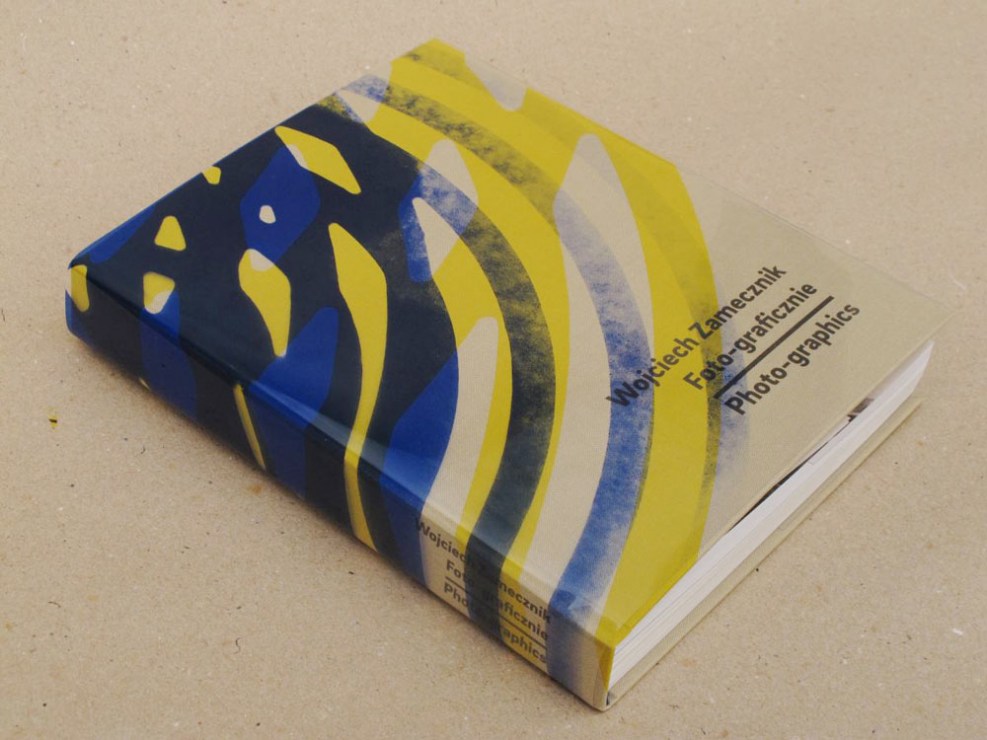 Wojciech Zamecznik. Photo-graphics, photo: courtesy of the Zachęta National Gallery of Art
Wojciech Zamecznik. Photo-graphics, photo: courtesy of the Zachęta National Gallery of ArtPhoto-graphics is the first comprehensive study of the output of one of the greatest representatives of the Polish Poster School. This richly illustrated album covers the artist’s life and his multi-layered artistic work, and the texts gathered in the compilation show the artist in his particular cultural and historical context. In November 2016, the book won the Photography Catalogue of the Year prize at the Aperture Foundation Photobook Awards during Paris Photo. Dagmara Staga writes on Culture.pl:
The very same cover of the album refers to Zamecznik’s graphic compositions. The colour scheme of the cover defines the dominant colours inside the publication. This time we can judge a book by the cover. Small flyleaves separating particular elements, a distinct typesetting and an untypical combination of dingy beige and strong yellow define Zamecznik well. He would undoubtedly not be ashamed of such an album.